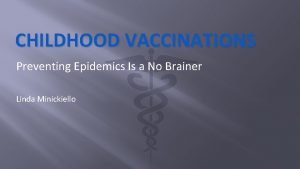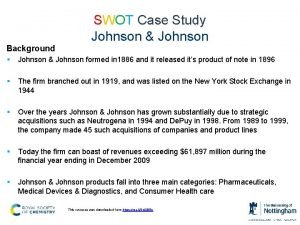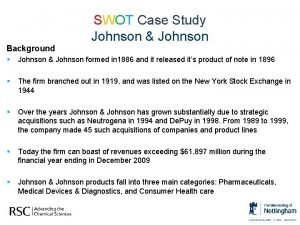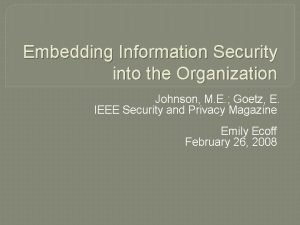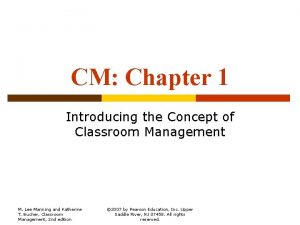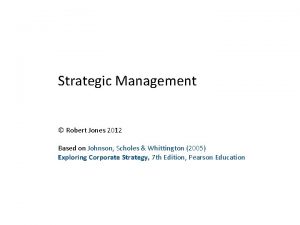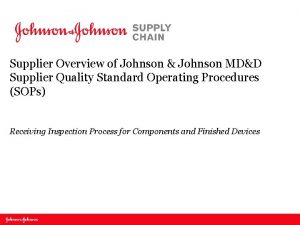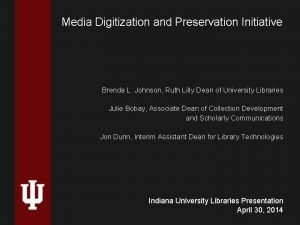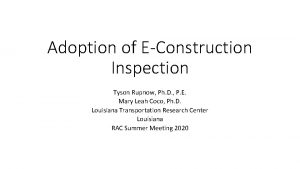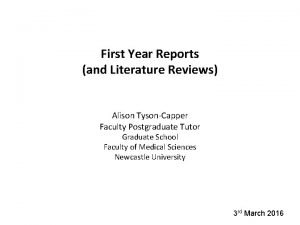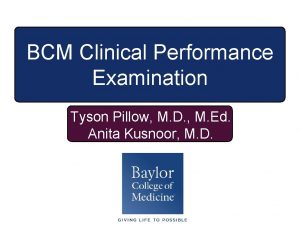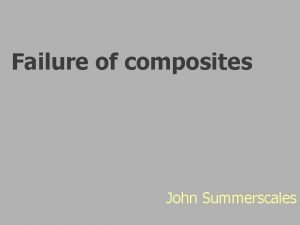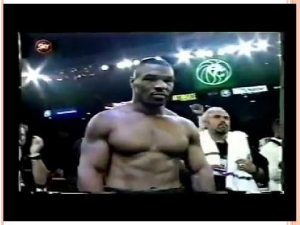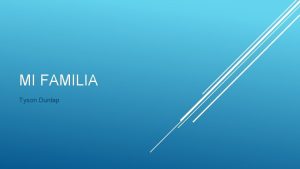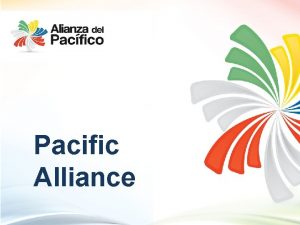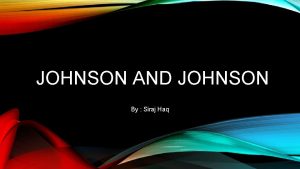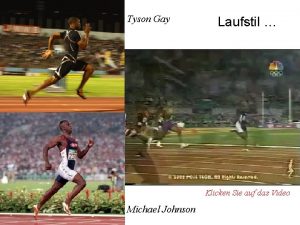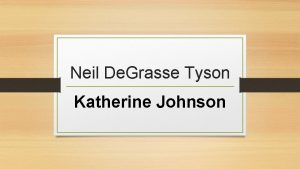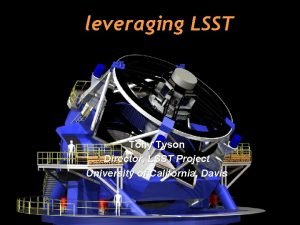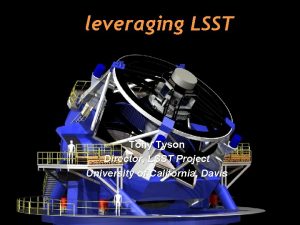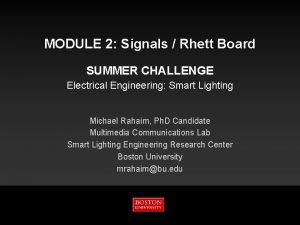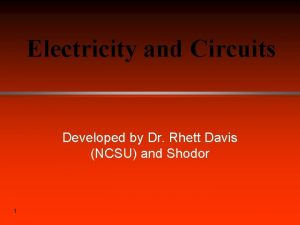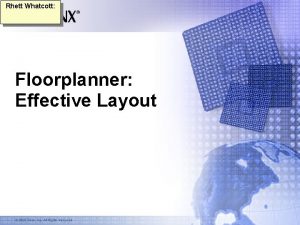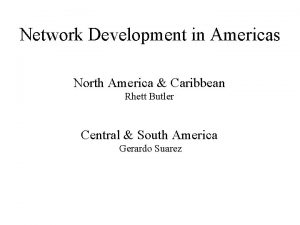Rhett Johnson Director of the Longleaf Alliance Tyson

















- Slides: 17

Rhett Johnson, Director of the Longleaf Alliance Tyson Family Lecture on the Preservation and Restoration of Southern Ecosystems Thursday, Nov. 1, 7 p. m. Olin Teaching Theater, Franklin W. Olin Building Rhett Johnson, founder and president emeritus of the Longleaf Alliance, which is dedicated to the conservation of longleaf pine ecosystems, will talk about his efforts in the movement to restore longleaf pine back to its native Southeastern range. The program is the first of Wofford’s Tyson Family Lecture on the Preservation and Restoration of Southern Ecosystems. It is presented by Wofford’s Environmental Studies Program.

1 QQ for 8: 30 31 Oct Write each letter and circle the letter of correct statements. a) Corticobulbar tracts control movements of the face. b) Huntington’s chorea is characterized by involuntary purposeless jerky movements and is associated with disruptions in cerebellar function. c) Muscle spindle afferents monitor skeletal muscle tension. d) Gamma motoneurons cause extrafusal myofibers to contract. e) In the patellar stretch reflex, motoneurons for antagonistic muscles would be inhibited.

1 QQ #22 for 10: 30 Write each letter and circle the letter of correct statements. a) Corticobulbar tracts control movements of the distal extremities. b) Huntington’s chorea is characterized by involuntary purposeless jerky movements and is associated with disruptions in cerebellar function. c) Muscle spindle afferents monitor skeletal muscle tension. d) Gamma motoneurons cause extrafusal myofibers to contract. e) In the patellar stretch reflex, motoneurons for antagonistic muscles would be inhibited.

1 QQ#22 for 11: 30 Write each letter and circle the letter of correct statements. a) Corticobulbar tracts control movements of the distal extremities. b) Deficits in the ability to point to a spot on a map may indicate a disruption in cerebellar function. c) Muscle spindle afferents monitor skeletal muscle stretch. d) Alpha motoneurons cause intrafusal myofibers to contract. e) In the crossed-extensor reflex, motoneurons for flexor muscles in the contralateral leg would be inhibited.

31 October 12 Begin Ch 12 Cardiovascular Physiology 6 sections p. 353 -433 2 CV labs: 1 Frog heart, 1 Human EKG and Blood Pressure

Was there ever a time when you didn’t have a heart?

When did you get a heart? Why did you need a heart?

S 2 What does the Circulatory System Circulate? Nutrients, water and gases that enter. Substances that move from cell to cell. Wastes that must be eliminated to the outside. What if the heart stops beating? 5 -10 seconds of zero blood flow to brain = loss of consciousness (hypoxia) 5 -10 minutes = permanent brain damage

S 2 • • What does the Circulatory System Circulate? Water and ions Nutrients: glucose, fatty acids, ketones, nucleic acids, amino acids Wastes Signaling molecules: hormones and cytokines Security cells and molecules: leukocytes and antibodies Gases: CO 2 and O 2 Formed Elements: Cells and Cell Fragments – Erythrocytes, Leukocytes, Thrombocytes = Platelets Other roles of the Cardiovascular System Thermoregulation Blood Clotting Reproduction (ex: penile erection)

S 1 S Secretion Reabsorption Filtration

S 4 Fig. 12. 02 Arteries. . away from heart Veins. . return to heart Regional blood flow determined by arteries and arterioles. Resting Cardiac Output = 5 L/min for each side! Red = highly oxygenated blood Blue = blood with less oxygen.

S 6 Pulmonary circuit CO = 5 liters/min Arterial Blood Pressure Systemic Circuit What’s missing? CO = 5 liters/min Portal Systems have a modified sequence of vessels. Resistance Vessels Exchange Vessels Microcirculation Capacitance vessels

Hypothalamo-hypophyseal portal system

Hepatic portal system

What makes blood move (flow)? A Pressure Gradient Flow = Q = ∆P Where is the pressure the highest? Where is the pressure the lowest? What creates the pressure? What deters flows? Resistance R = 8 Lη/πr 4

R = 8 Lη/πr 4 Smooth muscles determine radius

S 8 F=Q=ΔP/R Flow = Pressure gradient/Resistance from Ohm’s Law (V=IR) 44 RR==8 Lη/πr Q= ΔP πr 4 8 Lη Poiseulle’s equation Double radius … 16 x flow Half radius…. 1/16 th flow
 Rhett krawitt
Rhett krawitt Dr rhett miller
Dr rhett miller Johnson and johnson swot analysis
Johnson and johnson swot analysis Johnson and johnson values
Johnson and johnson values Jjeds employee directory
Jjeds employee directory Johnson background
Johnson background Johnson and johnson organizational structure
Johnson and johnson organizational structure Johnson and johnson three c's of classroom management
Johnson and johnson three c's of classroom management Johnson and johnson bcg matrix
Johnson and johnson bcg matrix Understanding the mirai botnet
Understanding the mirai botnet Johnson and johnson md&d
Johnson and johnson md&d Laurie johnson brad johnson
Laurie johnson brad johnson Tyson rupnow
Tyson rupnow Alison tyson xxx
Alison tyson xxx Unit 1 digital literacy
Unit 1 digital literacy Clinical performance examination
Clinical performance examination John summerscales
John summerscales Tyson
Tyson
